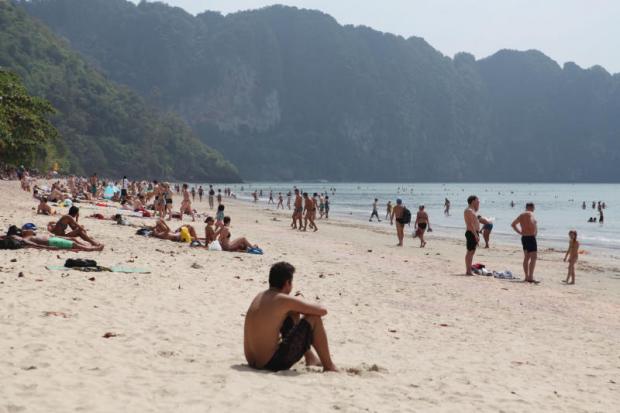Krabi is best known for turquoise seas, with over 130 islands and numerous caves on the southern Andaman coast.
The province has been challenged by increased tourist arrivals as it tries to encourage tourists to visit during the off-season period.
Under the campaign "Krabi 365 days", provincial authorities and private associations have cooperated to create events and add more activities to broaden Krabi's appeal to both Thai and foreign visitors. For example, music festivals to draw tourists during the so-called green season.
"Normally, high season for Krabi tourism is from November to April. From May to October, we call it the green season, partly because of the rain," said Somchai Harnpakdeepatima, chief of the Krabi Governor's Office.
With 6 million arrivals a year, Krabi ranks fifth in terms of tourism income in Thailand after Bangkok, Phuket, Chon Buri and Chiang Mai, he said.
Apichai Aranyig, director of the Tourism Authority of Thailand's (TAT) Krabi Office, said Krabi's tourism revenue has been growing by the average of 8% annually. This year, tourism income is expected to hit 100 billion baht, up from 96 billion in 2017.
"We try to curb the tourist number to this level or even reduce. Instead of more tourists, we aim to encourage the visitors to stay longer, especially those from Scandinavian countries," he said.
China and Malaysia are the top two source markets for visitors arriving in Krabi. Scandinavian visitors are still among the top five, representing a healthy contingent from Europe.
"The rapid increase of tourist arrivals has generated positive impacts to the local economy here. However, it has brought about environmental concerns too. The tourism industry of Krabi, as a result, is developing a strategic plan for environmentally sustainable tourism for the benefits of all stakeholders," said Mr Apichai.
He said during the monsoon season, it is probably not safe for tourists to visit the islands or go diving. Authorities have then teamed up with 16 local communities in Krabi to develop more community-based tourism such as spas, fishing villages and dyed fabric manufacturing to attract tourists. At the same time, more tourism spots have been added, including a salty hot spring along with promotions of unseen tourism spots such as the shell cemetery.
In addition, Krabi is staging "Ao Nang Beat Music Festival" from June 30 to July 1. Over two nights, audience members can also enjoy firework displays on the beach. Admission is free, and the islands are also less crowded while airfare and accommodations are much cheaper during this green season.
Apart from concerts from both Thai and international artists, over 50 food booths from across the province will join the event, with space for small enterprises in communities to sell local products such as preserved foods and souvenirs. This is aimed at promoting creativity and income distribution among local grassroots people.
Rong Phukaoluan, president of the Krabi Hotel Association, said hotel room prices are normally slashed by half during the green season to 1,500 baht, up to 3,000 baht per night in the Ao Nang area.
There are 460 hotels in the province, with some 200 additional hotels in the process of being licensed and another 200 under study.
More homestays are being developed along with green hotels to cater to environmentally conscious tourists.

